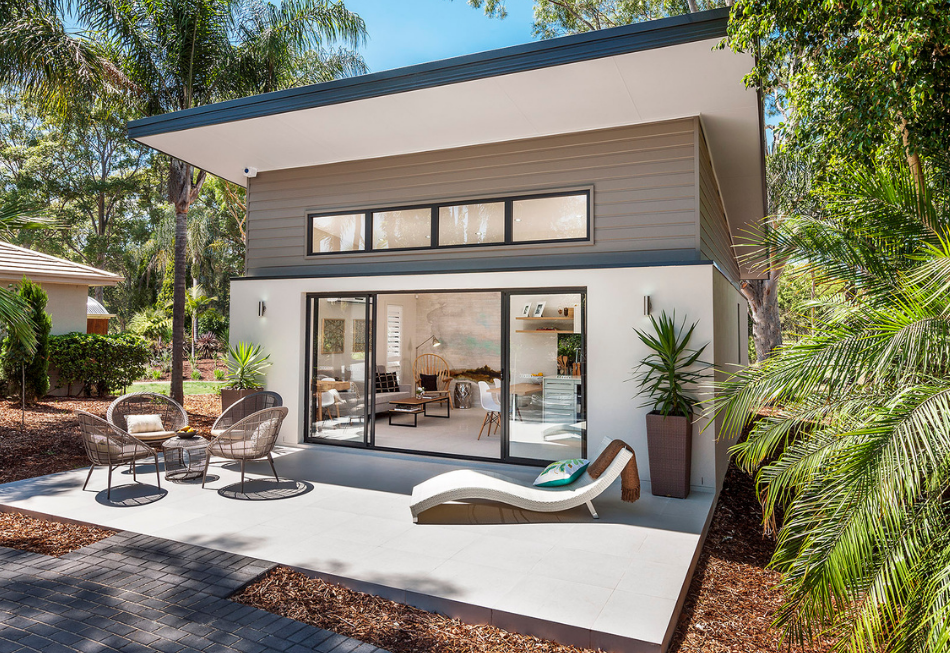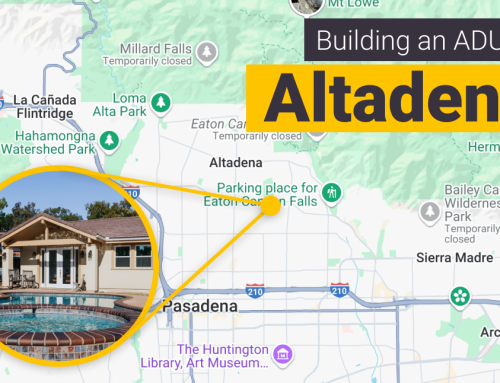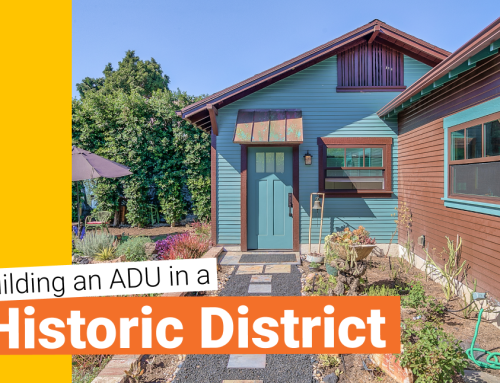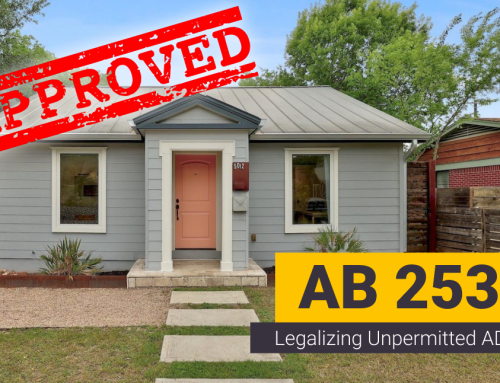California’s accessory dwelling unit (ADU) boom is on fire! Many of our clients began building their accessory dwelling units while they were stuck at home during the pandemic, and now their ADUs are complete. Maybe it’s your turn!
Working with thousands of homeowners across the state, we hear the same questions from the Bay Area down to San Diego. The recent regulations have made it easier than ever to build an ADU. Nonetheless, when building a small house, there’s a lot to consider.
So here are your top 11 FAQs about building an accessory dwelling unit in California!
- Can I build an ADU on my property in California?
- Accessory dwelling unit ordinance, California: Are there special rules for my region?
- How many ADUs can I have in California?
- How big can an ADU be in California?
- What are the California ADU setbacks?
- Will I need parking for my ADU?
- How much does an ADU add to property value?
- How much does it cost to build an ADU in California?
- Can I rent my ADU in California?
- What permits do I need to build an ADU in California?
- Prefab ADU: California Accessory Dwelling Units and the Prefab Option
Maxable is your one-stop-shop for planning and managing your ADU project. We match you with the designers and contractors ideal for your ADU and equip you with the resources you need so you can make smart decisions every step of the way.
1. Can I build an accessory dwelling unit on my property in California?
Yes! Anyone with a single-family or multi-family property can build at least an 800 sq. ft. ADU. Thanks to state exemptions, regulations like floor-area-ratio (FAR), front setbacks, and minimum lot size cannot be enforced for any ADU 800 sq. ft. or smaller. There are multiple options for adding an ADU to your property.
An accessory dwelling unit can be any of these:
- Detached ADU—A stand-alone unit separate from the main house and usually situated in the backyard.
- Garage conversion—You can convert your garage to an accessory dwelling unit and either keep it the existing size or expand it beyond the garage’s footprint. For inspo, see 37 Garage Conversion Ideas You’ll Drool Over.
- Over-garage ADU—A popular option when homeowners don’t want to lose the garage and can afford to build over it. Get details at Granny Flat Over the Garage: Is it Right for you?
- Attached ADU—Attached to the primary house, these ADUs often are converted garages. You’re also allowed to build a new ADU and have it attached to the main house if you want to.
- ADU converted from existing space—You’re allowed to convert space within your home to an ADU. This includes spaces like basements, attics, master bedroom suites, and rec rooms. These can also be permitted as JADUs.
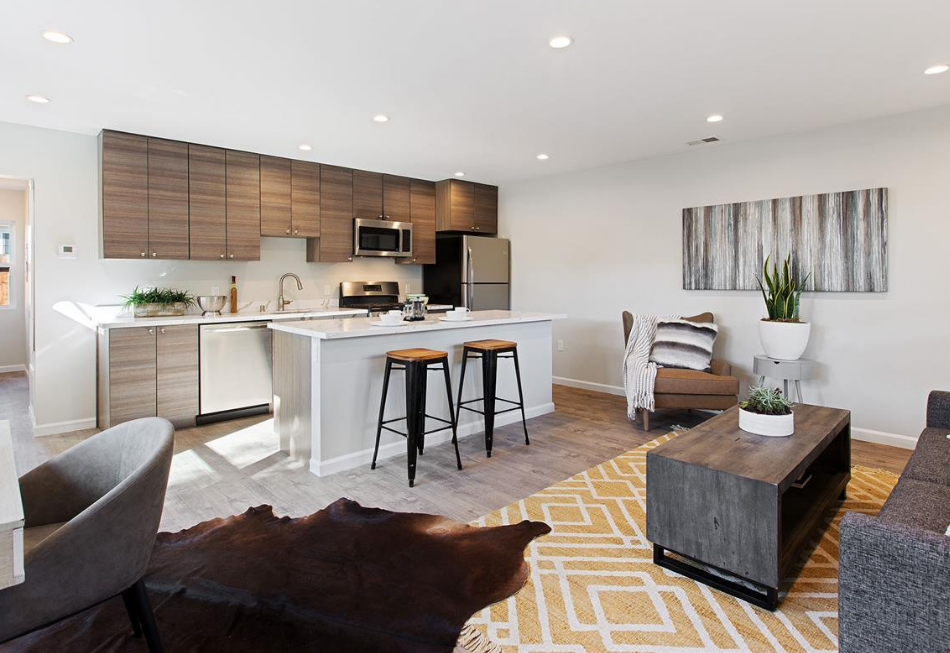
California JADUs have different rules
A JADU (Junior Accessory Dwelling Unit) is a type of ADU that must be created out of existing square footage within the primary residence.
JADUs have limitations that ADUs do not. For example, the owner must occupy the main house in order to rent out the JADU. The JADU may be no larger than 500 square feet, and parking may be required depending on your jurisdiction.
These restrictions will apply to anyone who buys your home in the future.
For more info go to What Is a JADU?
Lets chat about your ADU! 888-461-3884
2. Are there special ADU rules for my region?

Every region must follow the state of California’s ADU building regulations. However, each region has some wiggle room as long as it complies with the minimum regulations. If a city wants to be more progressive with their ADU laws, they can pass ordinances to legally set these new regulations. For example, state laws have set setback regulations to four feet for the side and rear, but San Diego has passed an ordinance to set setbacks as small as zero, which means the ADU can be built right up to the property line.
When it comes to ADU regulations you may have heard the following words passed around: jurisdiction, ordinance, and overlay. For clarification, let’s unpack what those three words mean.
Jurisdiction
A jurisdiction is the legal authority that decides your property’s building codes. Your jurisdiction may be your city or your county.
Ordinance
An ordinance is a set of regulations passed by your jurisdiction, like an addendum to the state laws. Some ADU ordinances have more generous rules than the state, while others stick to the bare minimum the state requires and add a few minor tweaks.
If your jurisdiction has not passed an ADU ordinance, you go by the state laws.
Overlay
An overlay is a a local rule that could impact your project. It may relate to floor-area ratio (FAR) development rules, architectural design, or other standards your city or neighborhood is implementing.
Overlays cannot prevent you from building an 800 sq. ft. ADU, but if you decide you want to build larger, they may affect how large or high an ADU can be on your lot.
Your designer should have the knowledge of your local ordinances and overlays before they begin your project.
3. How many accessory dwelling units can I have in California?
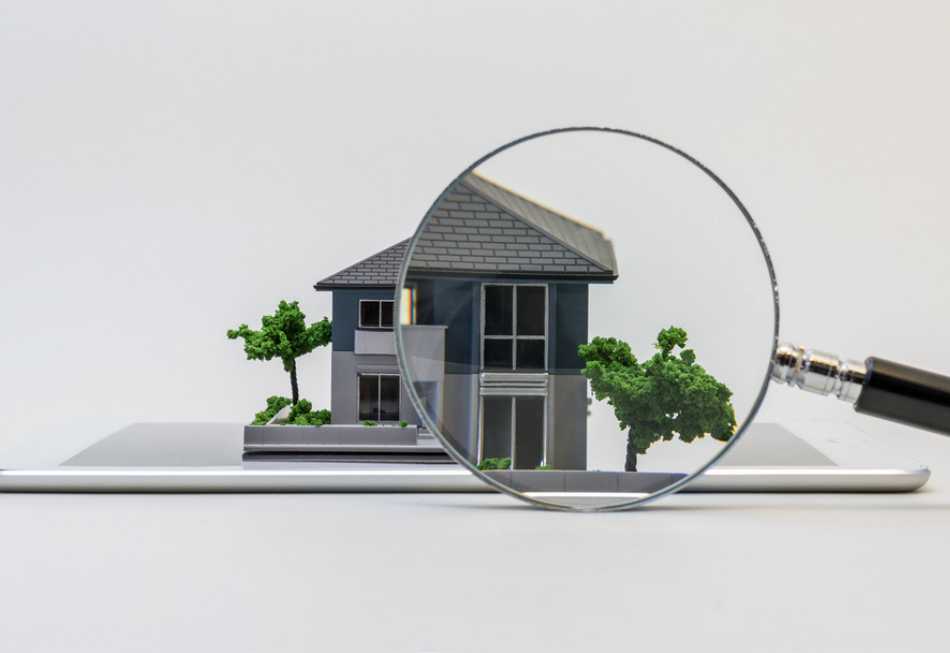
It depends on what is already on your property. If your property is zoned for single-family you can legally build:
- One attached ADU
- One detached ADU
- And one JADU
That is three additional units total if the following requirements are met:
Attached ADU and JADU
- The accessory dwelling unit or junior accessory dwelling unit is within the proposed space of a single-family dwelling or existing space of a single-family dwelling or accessory structure and may include an expansion of not more than 150 square feet beyond the same physical dimensions as the existing accessory structure.
- The space has exterior access from the proposed or existing single-family dwelling.
- The side and rear setbacks are sufficient for fire and safety.
Detached ADU
- One detached, new construction, accessory dwelling unit that does not exceed four-foot side and rear yard setbacks for a lot with a proposed or existing single-family dwelling. The accessory dwelling unit may be combined with a JADU.
- A total floor area limitation of not more than 800 square feet.
A property that has a duplex or a structure with more than two residences attached to one another (like an apartment building) is considered multi-family. With this property, what you’re allowed to build depends on your jurisdiction, but the state says you must be allowed to build some or all of the following:
- Up to eight stand-alone ADUs subject to height limits of 16 feet and 4-foot rear and side yard setbacks. The quantity limit will depend on how many existing living units there are: One ADU per existing living space.
- ADUs converted out of attached (non-livable) accessory space. This includes things like basements, attics, garages, boiler rooms, storage rooms, laundry rooms, and community rooms. The number of these ADUs may be as few as one or up to 25% of the number of dwelling spaces in the existing structure.
The regulations around multi-family properties are complex, but if you own one you should definitely be aware of the ADU opportunities! We dive into the details in How to Maximize Multi-Family ADUs.

4. How big can an accessory dwelling unit be in California?
Size limits in California are generous but a little confusing. Let’s break it down.
- 500 SF—the maximum size of a JADU.
- 800 SF—your jurisdiction must allow you to have an ADU this size regardless of all other development requirements.
- 850 SF—as long as your lot is in compliance with local development rules (for instance, your ADU will not exceed the property’s floor area ratio), you must be allowed to build a one-bedroom ADU of at least 850 SF.
- 1000 SF—as long as your lot is in compliance with local development rules, you must be allowed to build an ADU with two or more bedrooms of at least 1000 SF.
- 1200 SF—the state’s maximum for an ADU, but your jurisdiction can allow more.
- 50% of the main home’s square footage—the limit if your ADU is attached to the main home, unless this figure is less than 800 SF.
- No limit! Accessory structures such as barns and garages of any size can be converted to ADUs.
As for heights, there are state regulations for that too. All cities must allow at least 16 ft. height for your ADU. If your is within half a mile walking distance from public transit or your property already has a multi-family dwelling that is two-stories high, your ADU can be up to 18 ft. tall. The final figure for height is 25 ft. This height is allowed for all attached ADUs regardless of the height of the primary residence.
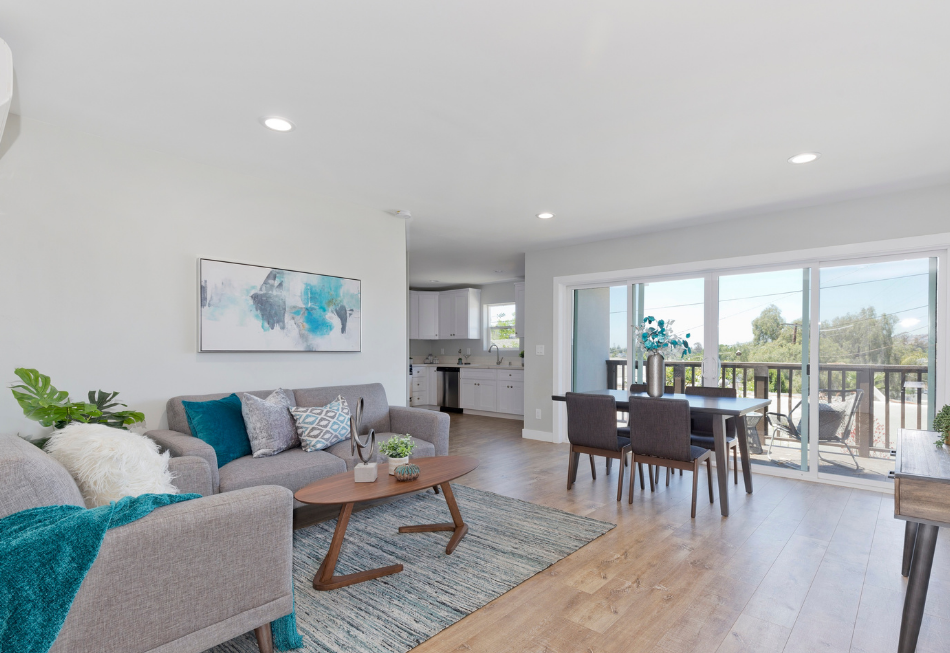
5. What are the California accessory dwelling unit setbacks?
ADU setbacks are less than setbacks for the main house.
- 4-foot rear and side setbacks are required for stand-alone ADUs.
- Garage conversions can remain where they are, even if it’s right on the property line. However…
- Expansions to a garage conversion must have 4-foot rear and side setbacks.
That’s all good, but there’s one more thing to consider: utility easements. If you have power lines running across the side or rear of your property, you may be required to get a permit from the utility company (not the city) that allows you to encroach on their easement.
For purposes of building an ADU, the easements can be up to 10 or 15 feet. Your designer should know to check on this and should handle getting the encroachment permit.
Encroachment permits are routinely granted but occasionally they are denied, and they may add some time to the permitting process.
6. Will I need parking for my accessory dwelling unit or JADU?
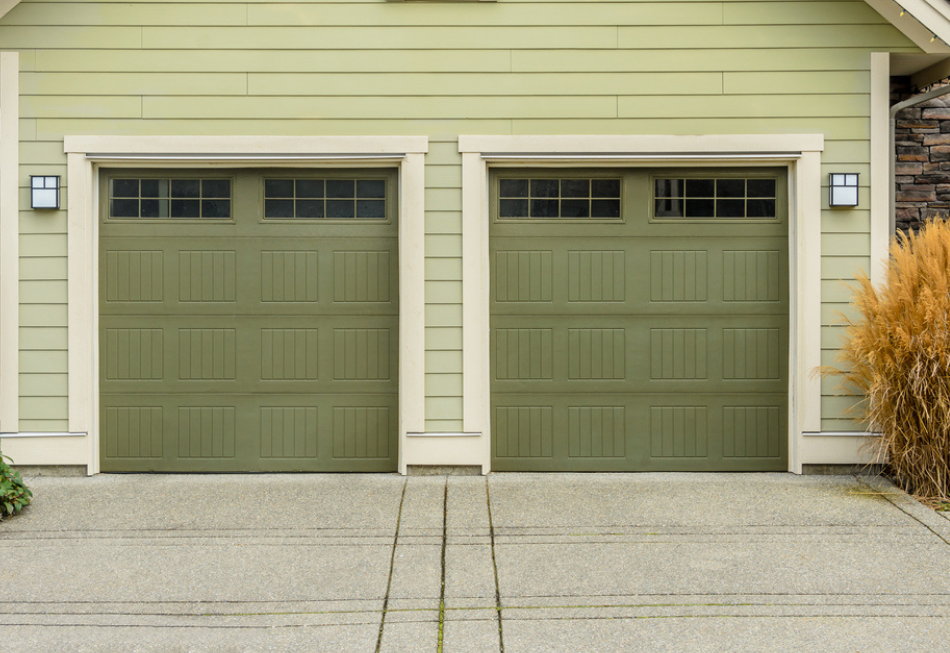
No parking spaces are required for your ADU if the unit is:
- one-half mile from public transportation
- within one block of a car-share vehicle
- within an architecturally and historically significant district
- part of the proposed or existing primary structure or an accessory structure, like a garage
- if permits are required for the area but not offered to the occupants of the ADU
Most ADUs fall into one of those categories, but if yours doesn’t, you may be required to provide one parking spot per ADU unit or bedroom, whoever is less. The spot can be tandem parking in a driveway.
The law is clear that if you convert a garage, carport, or covered parking space to an ADU, you are not required to replace the parking for the main house that is lost due to the conversion.
JADUs created in an attached garage are not subject to the same parking protections as ADUs: your jurisdiction could require you to provide replacement parking for the main house.
7. How much does an accessory dwelling unit add to property value?
The general consensus is that an accessory dwelling unit will increase your property value by between 20-30%. The amount depends on several things: your location, the size of the ADU, and the type of ADU.

Stand-alone ADU
A large stand-alone ADU will offer the biggest boost to your property value. It’s separate from the main house, giving you and the ADU occupant more privacy. And it can be built up to 1000 or 1200 square feet, depending on your jurisdiction.
Attached ADU
An attached ADU can be large (but not more than 50% of the main home’s square footage). It may be slightly less valuable than a stand-alone because it offers less privacy, but that depends on how it’s designed in relation to the main house.
Over-Garage ADU
These are highly coveted and you get to keep the garage. However, they’re usually on the small side and cost significantly more to construct than garage conversions, so you have to factor that into your long-term ROI.
Garage conversion ADU
Garage conversions offer a bit less property increase than other ADUs because there’s no longer a garage. Unless the garage is expanded, the ADU will likely be on the small side, between 400-500 square feet, which also affects this calculation. But make no mistake, your property value will still go up!
Garage conversions are hugely popular, especially in urban settings. What Does a Garage Conversion Cost? takes you step-by-step through the construction process. Given the rent you can get for these units, a lot of people are happy to give up their garage!
8. How much does it cost to build an accessory dwelling unit in California?

The cost to build an ADU in California starts at about $150,000. However, in the Bay Area, the cost for an ADU starts at about $180,000. The difference is mostly due to the cost and availability of labor. Also keep in mind that these are starting costs. There are many factors that can affect the costs like design, size, finishes, lot sloping, and more.
The architectural design of your ADU will probably be only about 6% of the ADU’s cost. Building permits are usually much less than that. Construction (labor and materials) is where most of your budget will go.
In all construction projects, raw materials are the main driver of expenses, and the price of raw materials fluctuates. For example, global economic pressures during the pandemic raised the price of lumber quite a bit.
That’s why it’s not practical to give open-ended cost-per-square-foot estimates for ADU construction. When contractors give you a proposal it will have an expiration date, usually 30 days.
Items your construction budget should include
Your construction budget covers all the materials needed for your accessory dwelling unit plus the labor to have it installed or built.
This includes things like:
- Excavation
- Foundation and flatwork
- Frame
- Roof
- Flashing and gutters
- Windows, shades, doors
- Exterior trim
- Decks
- HVAC
- Plumbing
- Electrical
- Insulation
- Drywall
- Millwork
- Paint
- Tile
- Flooring
- Hardware
- Mirrors
- Fireplace
- Handrails
- Appliances

Your budget also might include things you haven’t thought about:
- Design consultants (surveyors, structural engineer, energy engineer, etc)
- Demolition or site prep
- Hardscape or landscaping work
- Extra fees for separating utility meters
- Portapotty rental
- Site security
- Specialty tools, staging, shipping
- Debris removal
- Final conditions
- Sales tax
- Construction management or general contractor’s fee.
This list thanks to Build LLC.
Pro Tip: Save money by staying under 750 square feet
Before 2020, cities used Development and Impact (D&I) fees to make building an ADU prohibitively expensive. Now you don’t have to pay any D&I fees at all if your ADU is less than 750 square feet!
If your ADU is over 750 square feet you’re still in luck. Your jurisdiction will calculate your D&I fees based on what the fees for your primary house would be if it were built today. The price per square foot is what your ADU will be charged per square foot (including the first 750 SF).
Want more cash-saving tips? Go to 5 Hidden ADU Costs You NEED to Know.
9. Can I rent my accessory dwelling unit in California?
Yes, and that’s one of the main reasons people are jumping on the ADU bandwagon!
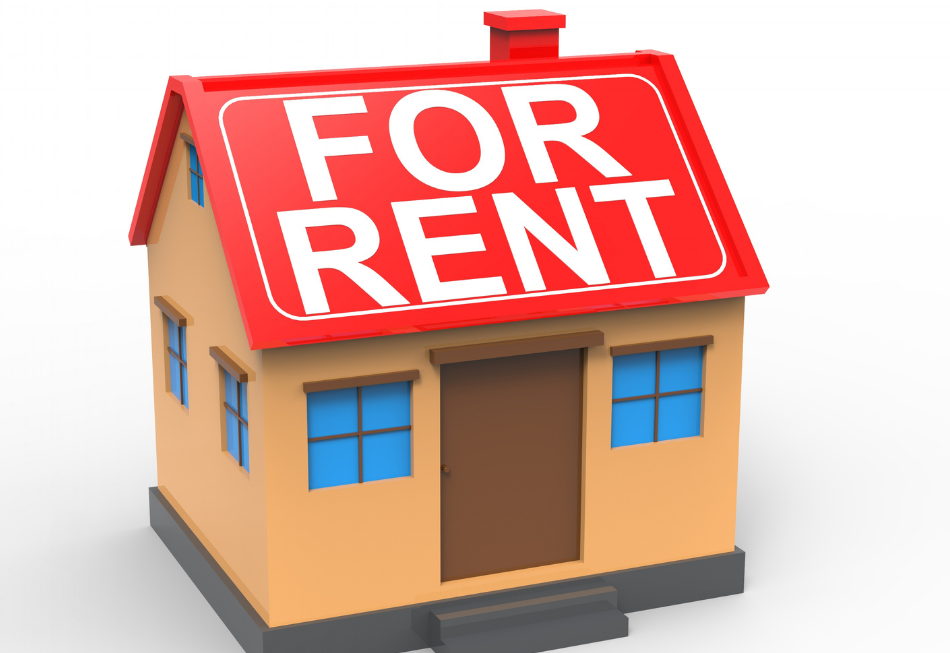
You may rent your ADU to long-term tenants. Depending on your jurisdiction, you may also be allowed to rent the ADU for less than 30 days, including on sites like Airbnb.
Here’s the really good news: In the hopes of quickly increasing the housing stock, the state has waived owner occupancy requirements indefinitely. This means you can rent both your main house and the ADU and not have to live on the property.
But this does NOT apply to JADUs! Now and in the future, the owner must live in the main residence in order to rent out the JADU.
The return on investment from renting your ADU will vary depending on your location, size of the ADU, etc. However, these small homes are hot ticket items for renters. Renters love the privacy, access to yard space, and the quiet associated with living in an ADU. All of Maxable’s clients that have rented their units are flooded with tenant applications as soon as they post their listing.
If you plan on renting your ADU, make sure you let your designer know that before getting started. Units designed for renting benefit from certain features like a washer and dryer and extra storage space. You also want to make sure your designer is keeping privacy in mind, not just for your tenant, but for you and your family as well. The entrance to your ADU should face away from the main house and have its own entryway.
10. What permits do I need to build an ADU in California?
To build an ADU in California, you will almost certainly need a building permit, which ensures that the construction complies with local zoning and safety regulations. The specific permits required will vary depending on your property and the region you live in. For example, if you’re converting a garage, you may also need a demolition permit to remove the existing structure.
Other potential permits include coastal development permits if you’re in a coastal zone, or utility permits if you need to adjust water, sewer, or electrical systems.
Pro tip: If you’re granted a building permit for a garage conversion, your city is required to also issue a demolition permit for the garage as part of the process, streamlining the approval for your ADU project. Always check with your local planning department for a full list of required permits specific to your project.
11. Prefab accessory dwelling units
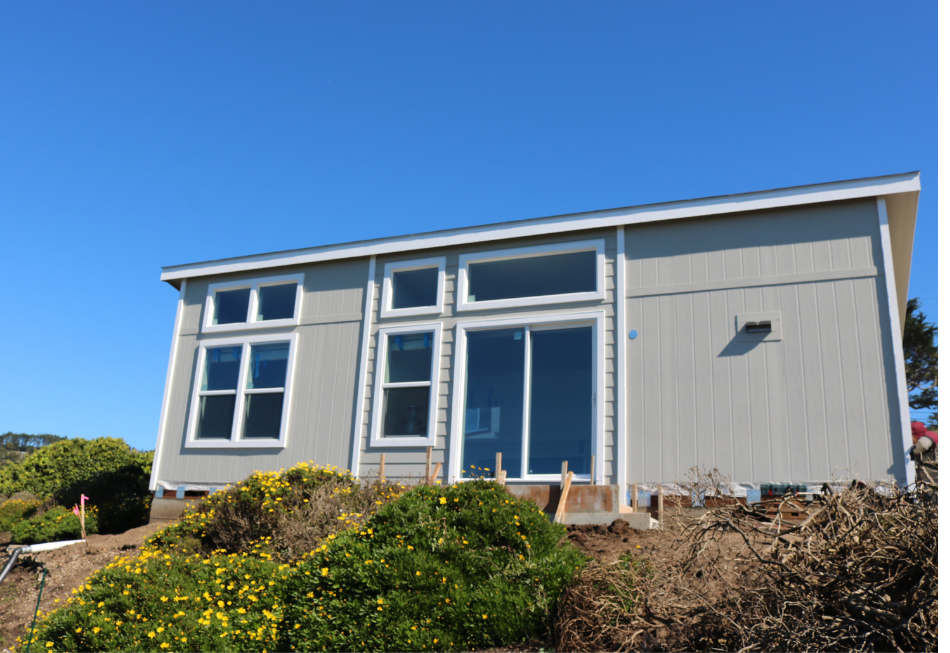
Prefabricated accessory dwelling units are manufactured off-site, usually in standard sections that can be shipped and quickly assembled.
Whether or not a prefab ADU is right for you depends on a number of things, primarily your lot. Prefabs make the most sense on a flat lot that is easy for large equipment to access.
Pros of Prefab ADUs
- Faster turnaround. Going with a modular option is faster because the site prep work and the construction occur simultaneously: one at the factory, the other at the site of the future ADU.
- Minimal on-site construction. With a prefab ADU, up to 90% of the unit may be complete when shipped from the factory. The percentage depends on the type of prefab you order. You still must prep the site, however: lay down lines for the plumbing and other utilities, pour a foundation, and other site requirements.
- Inspections happen at the factory. The state does all approvals and inspections of the house right in the factory. Your jurisdiction can charge only minimal fees for approval and inspection of site work.
- Eco-friendly. Modular prefab homes tend to be very energy efficient, with tight seams and highly rated windows.
- Seismically safe. Prefab ADUs are extremely sturdy so they can withstand the journey from the factory to your site.
Cons of prefab ADUs
- Same price than stick-built ADUs. Someday they may be, but at this time it costs about the same to build a custom ADU as to buy a prefab. This is because the costs for things like transportation of the unit, crane rental, and preparing the site must be factored into the overall price.
- Less customizable. You can change certain elements on most prefabs, such as carpet, paint, and cabinets, but it may be difficult or impossible to change the layout.
- Site constraints. Sites with steep slopes, narrow streets, lack of staging area, and above-ground electrical wires can kill your project.
- Factory closures. Prefab housing is still an emerging market with a lot of new companies moving into the space. Some factories have gone bankrupt and homeowners have lost their deposits. Make sure to check recent references.
The prefab accessory dwelling unit industry is rapidly evolving, so stay tuned for updates. Get more info at How do Prefab Granny Flats Work?
California’s best bet for fast affordable housing

Design by Maxable Space, Builder by Sidekick Homes
When you build an accessory dwelling unit you’re fortifying your city’s housing stock, helping retain your neighborhood’s character, and increasing your property’s flexibility. Not to mention the added property value and potential income you’ll gain!
So join the growing crowd of California ADU homeowners. We’re here to educate you and help you make the right choices for your property, your family, and your future.
Maxable is California’s ADU Marketplace. After writing state laws, educating thousands of homeowners, and helping complete hundreds of ADU projects, we know accessory dwelling units better than anyone else.
We’ll help you assemble the perfect ADU team, customized for you. When you’re ready to take the next step, it all starts with telling us about your ADU project. Check your address here.

